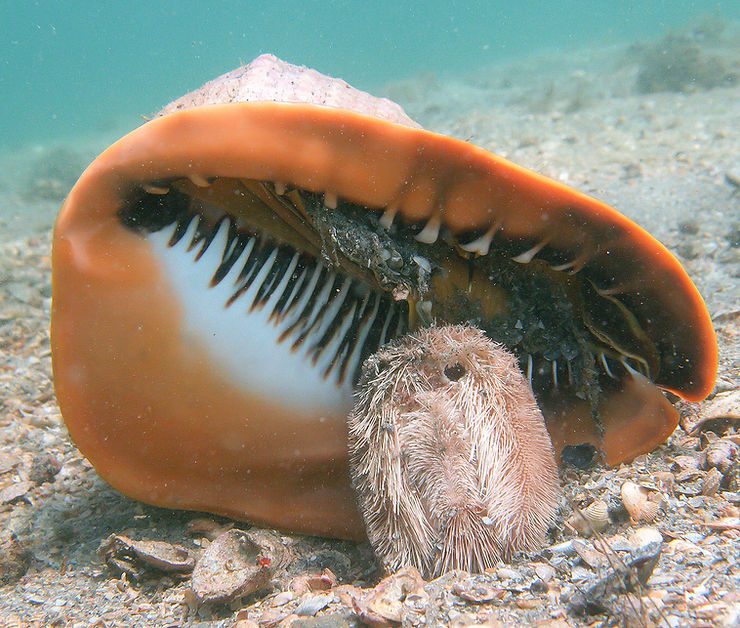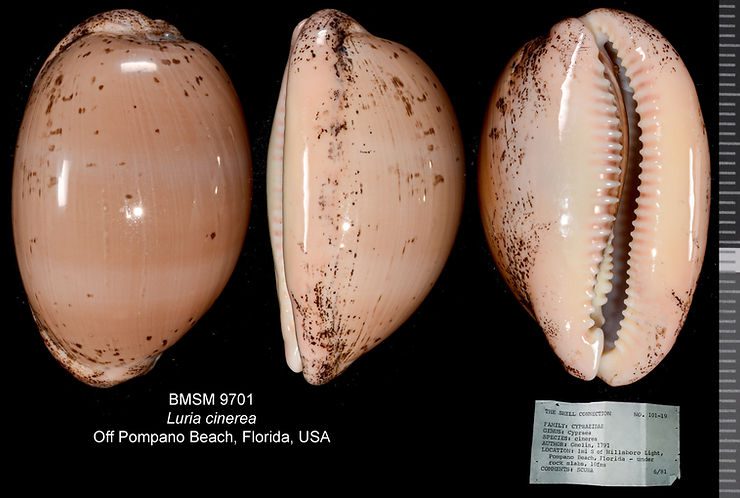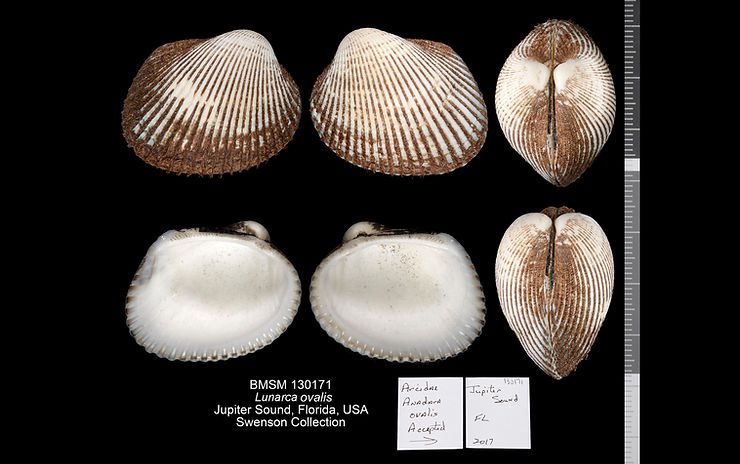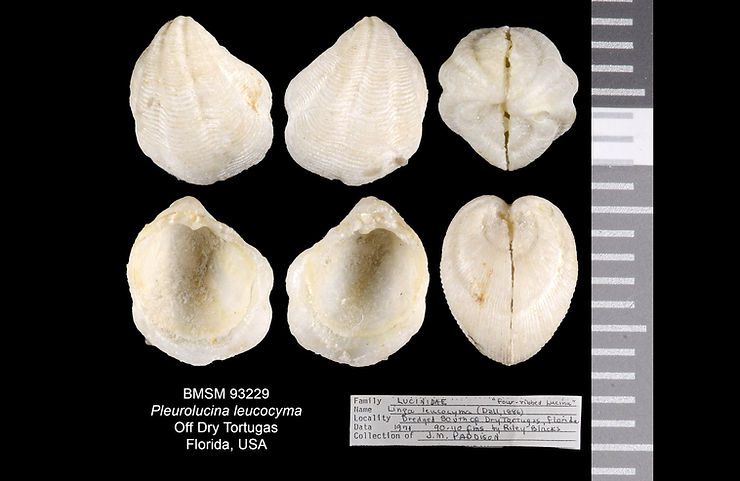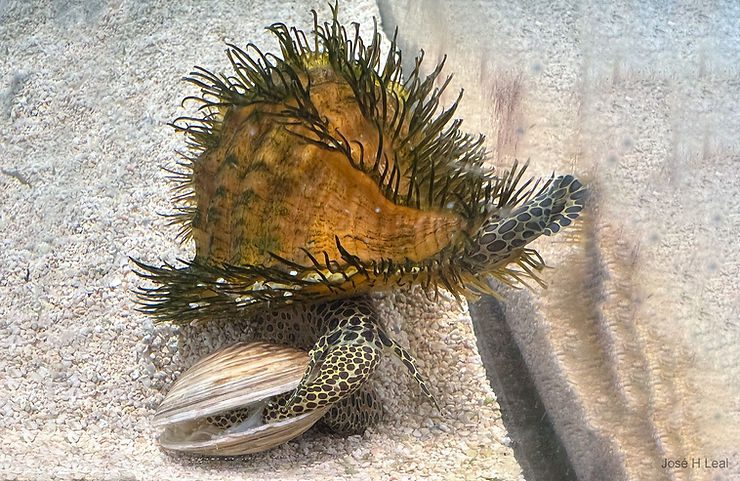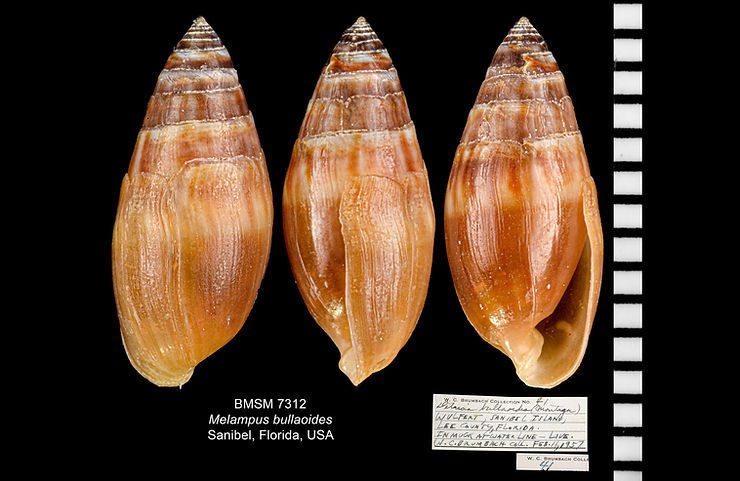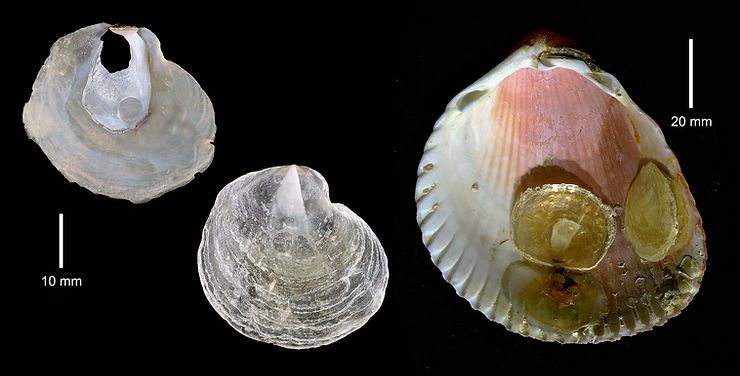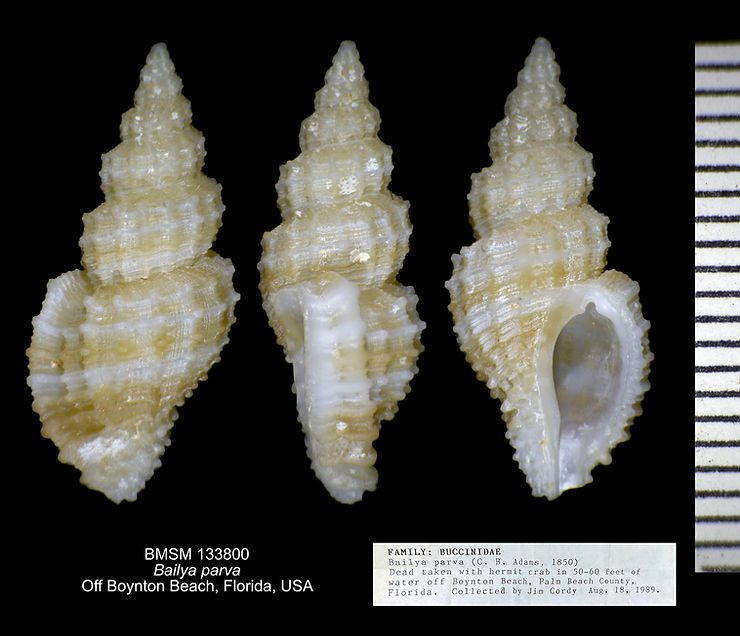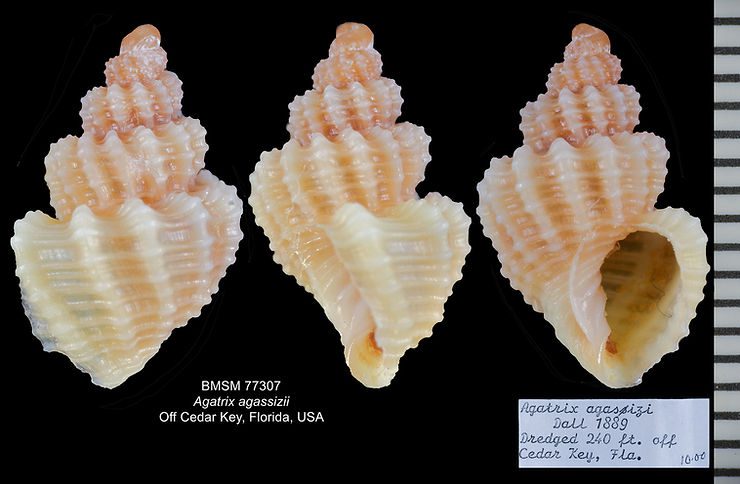
Shell of the Week: The Obscure Dwarf Triton
Colubraria testacea is a marine snail that grows to about 50 mm (about 2 inches). Colubraria species are found in tropical shallow seas and are known to feed (usually at night) on blood from reef fish, in particular parrot fishes of the family Scaridae. The western Atlantic Obscure Dwarf Triton is found from eastern Florida south to the Caribbean and the coast of eastern Brazil and, as the vernacular name suggests, resembles a small triton shell.#colubrariatestacea #obscuredwarftriton #colubrari
